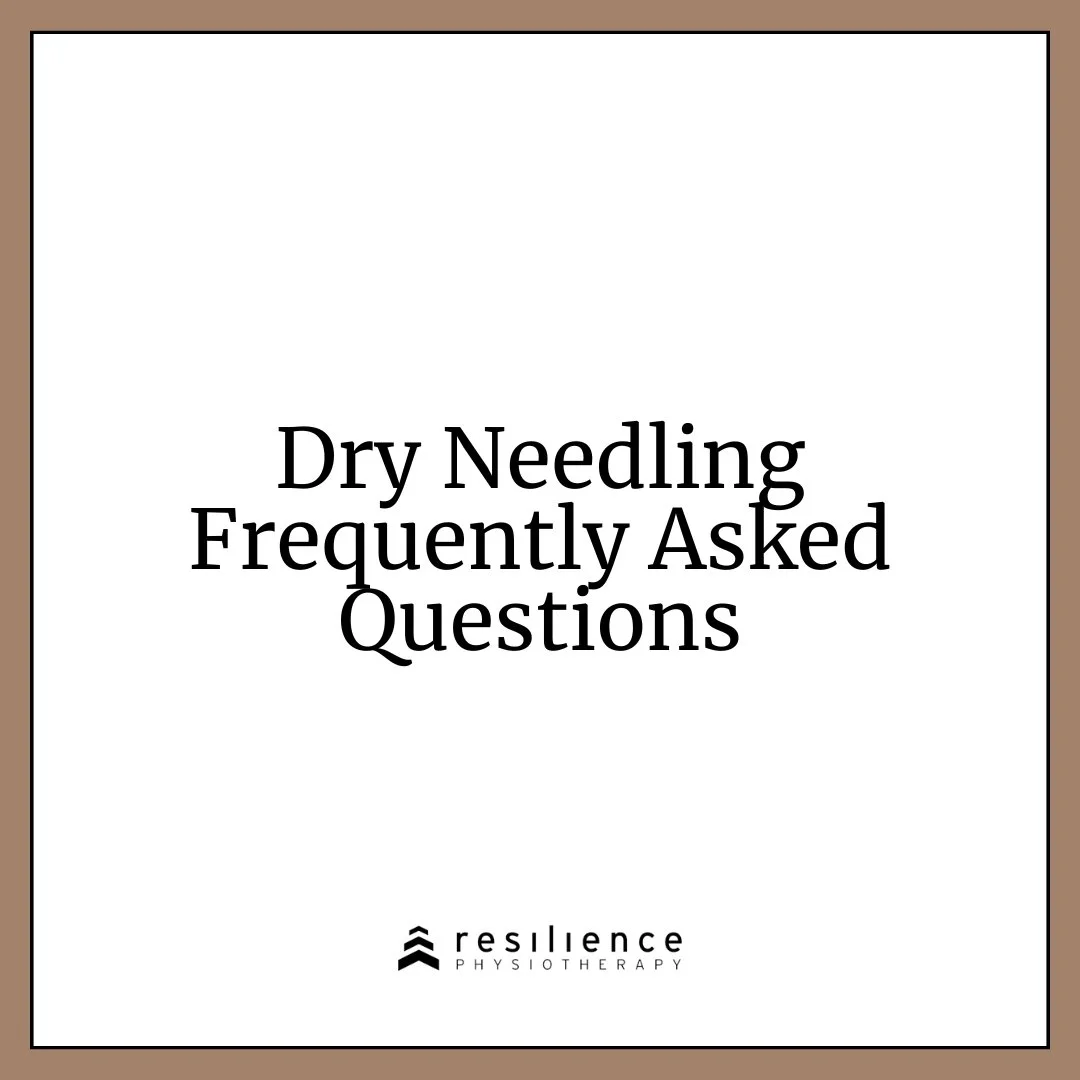Dry Needling Frequently Asked Questions
I thought it would be helpful to write a blog about the most frequently asked questions that I get about dry needling so here we go!!
How does dry needling work??
We insert an acupuncture needle into a knot or trigger point to get it to release. When it releases, you’ll feel a contraction which is what is called a ‘twitch’ response. When muscle fibres are released, it allows a muscle that has become tight & short to begin to lengthen. In turn, there is reduced pull on the muscle’s insertion point and the pressure is also reduced on the surrounding joints. Decreased pain and inflammation are typically the result.
Does dry needling hurt??
The simple answer is yes BUT honestly I think it feels weird more than anything else! It’s strange because this foreign object (the acupuncture needle) is triggering a contraction to happen in your muscle when it’s inserted into a knot but it’s not your brain triggering the contraction. It’s a feeling that some people describe as a ‘wiggly worm’ wriggling under their skin as the muscle releases. Generally the tighter the muscle, the more reaction we will get and in certain areas the feeling can be really intense. Areas like your adductors, calves and upper fibres of trapezius tend to carry a lot of tension so they may be more uncomfortable when needled. The good news is that the needles go in then out and do not linger for any length of time so it doesn’t take long to perform (aka it’s over before you know it!). The most common feeling post treatment is very similar to the delayed onset muscle soreness (DOMS) that you would get post a big workout after lifting weights. This feeling typically only lasts 1-2 days post treatment.
I’ve had acupuncture before, is dry needling the same thing?
Nope, I joke that the only similarity between acupuncture and dry needling is that we use acupuncture needles for both. The delivery and methodology is completely different. In acupuncture it’s rooted in traditional Chinese medicine so it’s based on flows of energy, meridians and performed in very specific points that have been mapped out on the body for hundreds of years. For dry needling it’s much more anatomically based. We assess for areas that are facilitated and we insert the needles into knots and trigger points that are causing the muscle to live in a shortened position. The twitch response that’s induced helps to lengthen the muscle fibres creating more length in the muscle and in turn decompresses areas of tension. Acupuncture is relatively gentle and may induce some sensations of heat or achiness, but it’s not as uncomfortable as dry needling. The needles stay in for ~15-20 minutes during a session of acupuncture, whereas in dry needling, the needles go in and out and are only repeated on the trigger points identified so the whole process is much shorter.
Can I exercise after dry needling?
No. We recommend that you rest and allow the muscles to heal & repair for at least 24 hours post session. Any post treatment soreness should have dissipated before you load the area again.
Have you had dry needling done before?
Yes! I find it incredibly beneficial and have had it done many times for many different injuries. When we are training and taking a dry needling course, the way we learn is on each other. We’re partnered up and practice each and every point on one another. It’s helpful to know how it feels for any technique we use in practice, to be able to relate to our patients.
Got any other burning questions about IMS? Book in a FREE 10 minute consultation with Angela, Jyoti or Shannon here to learn more!

